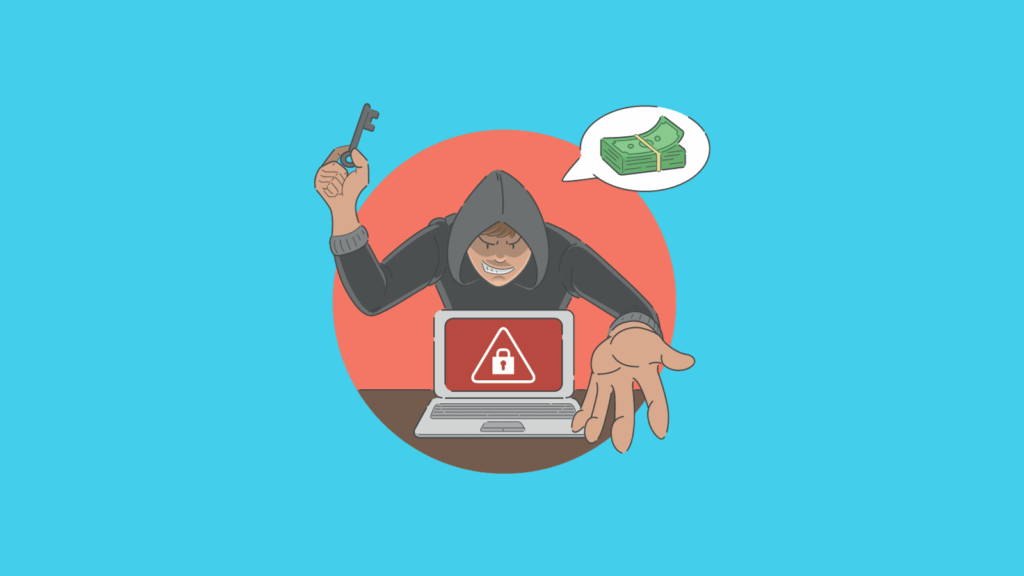Top Cybersecurity Threats. What You Need to Know

In the ever-evolving landscape of technology, every year brings with it a new set of challenges and risks in the realm of cybersecurity.
As our dependence on digital systems keeps increasing, cyber threats are also becoming more advanced. Both organizations and individuals must stay alert in safeguarding important data and ensuring the stability of their digital setup.
In this article, we will explore the top cybersecurity threats and discuss what you need to know to safeguard your digital assets.
Chapters
- 1. Ransomware Evolution
- 2. Supply Chain Vulnerabilities: A Growing Concern
- 3. IoT (Internet of Things) Risks: Expanding Attack Surfaces
- 4. AI-Powered Attacks: Exploiting the Technology Itself
- 5. Zero-Day Exploits: Unpatched Vulnerabilities Under Attack
- 6. Social Engineering Attacks: Manipulating Human Psychology
- 7. Nation-State Cyber Threats: Escalating Geopolitical Concerns
- 8. Cloud Security Challenges: Managing the Shared Responsibility Model
- How AI can Help Protect Against Cybersecurity Threats
- Wrapping Up
1. Ransomware Evolution

Ransomware attacks have been a common threat in recent years, they are expected to become even more sophisticated and targeted. Cybercriminals are employing advanced techniques such as artificial intelligence and machine learning to optimize their attacks.
These changing approaches pose a difficulty for conventional cybersecurity methods to detect and prevent ransomware effectively. Various professional IT organizations offer strategies for combating ransomware attacks and other threats and may help you with leveling up your managed IT services. In cases where ransomware attacks escalate into legal challenges, seeking advice from criminal defense lawyers can be a critical step to address potential liabilities and navigate complex legal scenarios.
To defend against this threat, organizations should prioritize regular data backups, implement robust endpoint protection, and conduct employee training to recognize phishing attempts. Additionally, investing in advanced threat detection solutions that leverage AI and machine learning can help organizations stay ahead of the rapidly evolving ransomware landscape.
2. Supply Chain Vulnerabilities: A Growing Concern
In recent years, supply chain vulnerabilities have emerged as a critical focal point for cybersecurity professionals. The interconnectedness of global business ecosystems makes supply chains an attractive target for cybercriminals seeking to exploit weaknesses in one link to compromise the entire chain. This threat is expected to escalate, posing significant risks to organizations and their partners.
Mitigating the Risks
To effectively address supply chain vulnerabilities, organizations must adopt a comprehensive and collaborative approach to cybersecurity. Here are some key strategies to mitigate the risks associated with supply chain attacks.
Comprehensive Cybersecurity Assessments
Conducting thorough cybersecurity assessments of all partners, vendors, and third-party entities within the supply chain is a fundamental step. This involves evaluating their cybersecurity policies, practices, and the effectiveness of their security measures. Regular audits and due diligence can help identify potential weaknesses before they can be exploited.
Multi-Factor Authentication (MFA)
Introducing multi-factor authentication throughout the supply chain enhances security by demanding users provide multiple forms of verification before accessing sensitive information. This straightforward yet impactful step can greatly decrease the chances of unauthorized access, even in cases where login credentials are compromised.
Encryption Protocols
Encrypting sensitive data during transit and storage is crucial for safeguarding information as it moves through the supply chain. End-to-end encryption guarantees that intercepted data stays unreadable and secure, maintaining its confidentiality. Organizations should establish and enforce encryption protocols to protect critical information from potential breaches.
Clear Security Protocols
Establishing clear and standardized security protocols for all entities within the supply chain is essential. This includes guidelines for data handling, access controls, and incident response. A well-defined and communicated set of security policies ensures that all participants are aligned in their commitment to maintaining a secure environment.
Continuous Monitoring and Incident Response
Implementing continuous monitoring solutions allows organizations to detect and respond to security incidents in real time. Taking a proactive stance allows for a quick response in case of a security breach, minimizing the potential impact on the supply chain. Having robust incident management software in place can further ensure that organizations effectively contain and remediate threats.
Collaborative Information Sharing
Establishing a culture of information sharing and collaboration among supply chain partners is crucial. Timely sharing of threat intelligence and cybersecurity best practices strengthens the collective defense against evolving cyber threats. Industry-specific information-sharing forums and partnerships can play a pivotal role in building a resilient supply chain ecosystem.
3. IoT (Internet of Things) Risks: Expanding Attack Surfaces

The proliferation of IoT devices continues to expand the attack surface for cybercriminals. We can expect an increase in attacks targeting smart homes, connected healthcare devices, and industrial IoT systems. These devices often lack robust security measures, making them attractive targets for hackers seeking unauthorized access or launching large-scale distributed denial-of-service (DDoS) attacks.
To address IoT risks, individuals should change default passwords on their devices, update firmware regularly, and only purchase products from reputable manufacturers with a strong commitment to security. Organizations incorporating IoT devices should emphasize security during both development and implementation, conducting regular security audits and updates to safeguard against emerging threats.
4. AI-Powered Attacks: Exploiting the Technology Itself
While artificial intelligence offers many benefits in enhancing cybersecurity, it also poses a risk when in the wrong hands. We can anticipate an increase in AI-powered attacks that exploit vulnerabilities in AI systems. These attacks may include adversarial machine learning, where attackers manipulate AI algorithms to produce incorrect or malicious results.
To defend against AI-powered attacks, organizations must implement robust security measures for their AI systems. This includes regularly updating algorithms, monitoring for unusual patterns of behavior, and investing in AI-driven cybersecurity solutions that can detect and mitigate AI-based threats.
5. Zero-Day Exploits: Unpatched Vulnerabilities Under Attack

Zero-day exploits, which target unpatched vulnerabilities in software, continue to be a significant threat. Swift to exploit newly found vulnerabilities, cybercriminals act before patches are released. Therefore, organizations must stay ahead when it comes to software updates and security patches.
To defend against zero-day exploits, organizations should implement a proactive patch management strategy. This includes regularly updating all software and systems, monitoring for vulnerability disclosures, and employing advanced threat intelligence solutions to identify potential zero-day vulnerabilities before they are exploited.
6. Social Engineering Attacks: Manipulating Human Psychology
Despite advancements in technology, social engineering attacks remain a prevalent and effective method for cybercriminals. We can expect an increase in phishing attacks, vishing (voice phishing), and other social engineering tactics that exploit human psychology to gain unauthorized access to sensitive information.
To counter social engineering attacks, organizations should invest in comprehensive cybersecurity awareness training for employees. Regular simulated phishing exercises can help employees recognize and resist social engineering attempts. Additionally, implementing email filtering solutions and multi-factor authentication adds an extra layer of defense against these deceptive tactics.
7. Nation-State Cyber Threats: Escalating Geopolitical Concerns
The landscape of cybersecurity is not only shaped by individual hackers or criminal organizations but also by nation-states with cyber capabilities. Nation-state-sponsored cyber threats are expected to escalate, with countries using cyber tools for espionage, political influence, and economic disruption.
To protect against nation-state cyber threats, organizations must adopt a comprehensive cybersecurity strategy that includes robust perimeter defenses, threat intelligence sharing, and continuous monitoring for signs of advanced persistent threats (APTs). Collaboration between the public and private sectors is crucial to addressing the geopolitical challenges posed by nation-state cyber actors.
8. Cloud Security Challenges: Managing the Shared Responsibility Model

As organizations increasingly migrate to cloud environments, the shared responsibility model becomes a critical aspect of cybersecurity. Cloud security challenges will continue to evolve, requiring organizations to understand their responsibilities in securing cloud infrastructure and services.
To navigate these challenges, companies should enforce robust access controls, encrypt data both in transit and at rest, and regularly audit cloud configurations for weaknesses. With the growing reliance on cloud computing, adopting advanced cloud security technologies is essential to keep data safe. Many businesses now collaborate closely with cloud security providers to understand the latest security features and best practices for maintaining a secure cloud environment.
How AI can Help Protect Against Cybersecurity Threats

Organizations face a growing need for efficient, robust, and proactive cybersecurity solutions. Artificial intelligence (AI) is emerging as a powerful tool in this battle, revolutionizing how companies and individuals safeguard against cybersecurity threats. Leveraging AI for cybersecurity not only enhances threat detection but also improves response times, reduces human errors, and provides a predictive edge against potential vulnerabilities. This article explores how AI can help protect against cybersecurity threats and why businesses should consider integrating AI-based solutions into their security strategies.
1. AI in Threat Detection and Prevention
AI’s ability to analyze massive amounts of data in real time makes it invaluable for detecting cybersecurity threats. Traditional methods rely on pre-defined rules and patterns, but with the vast and evolving nature of today’s cyber threats, these methods often fall short. AI-powered systems, however, use machine learning algorithms to recognize even the subtlest of deviations in network behavior, such as unusual login times or suspicious access patterns. By doing so, AI-based systems detect potential threats before they become full-blown attacks, providing a much-needed layer of proactive defense.
Example: In 2020, Microsoft’s AI-powered security solution, Azure Sentinel, used machine learning to analyze and correlate security events across its network. This AI-driven approach allowed it to quickly identify threats that traditional systems would have overlooked, ultimately preventing substantial data breaches.
2. Predictive Analytics for Proactive Cyber Defense
AI’s predictive capabilities play a crucial role in cybersecurity. By studying historical data on past cyberattacks, AI systems can identify patterns and predict where vulnerabilities are likely to occur in the future. Predictive analytics helps organizations address weak points before hackers can exploit them, making it a game-changer for companies that want to stay ahead of evolving threats.
AI can detect unusual user behavior, like logging in from unusual locations or accessing unfamiliar systems, which can signal a potential security risk. By using predictive models, organizations can bolster their defenses, making it difficult for cybercriminals to breach their systems.
3. Automated Incident Response
One of the most challenging aspects of cybersecurity is responding to incidents quickly enough to minimize damage. AI-driven automated incident response systems speed up this process by handling the initial stages of threat response autonomously. When an AI system detects suspicious activity, it can instantly take action, such as isolating the affected network segment or flagging compromised files, to prevent the threat from spreading further. This allows human teams to focus on more complex cases, improving overall efficiency and reducing response times.
Example: CrowdStrike, a leading cybersecurity company, utilizes AI-based automation for rapid incident response. Their platform detects and quarantines suspicious files instantly, minimizing the risk of widespread damage and giving cybersecurity teams more time to conduct thorough investigations.
4. Enhanced Fraud Detection and Phishing Prevention
AI also plays a significant role in detecting and preventing fraud and phishing attacks, two of the most common cybersecurity threats. Advanced AI algorithms can identify signs of phishing, such as slight deviations in email language or sender address, which may be overlooked by the human eye. Moreover, AI-driven models are continuously trained on new data, allowing them to detect and prevent fraudulent activities in real time.
For instance, financial institutions use AI-powered systems to analyze transaction patterns and flag unusual behaviors, such as large, repeated transactions in short timeframes, which could indicate fraudulent activity.
5. Strengthening Security Protocols with Adaptive AI
Traditional cybersecurity measures often rely on static protocols, which, while useful, can become outdated as cyber threats evolve. AI-based systems are inherently adaptive, meaning they can adjust security protocols based on real-time data and threat landscapes. This ability to “learn” from new data and threats allows AI-driven security solutions to stay one step ahead of cybercriminals, providing a dynamic defense that can adapt to emerging threats.
Adaptive AI in cybersecurity is particularly beneficial for fine-tuning access controls based on user behavior. For example, if an employee typically logs in during business hours but suddenly accesses systems at unusual times, AI-driven protocols can trigger additional authentication steps to ensure that the user’s identity is legitimate.
6. Cost Efficiency in Cybersecurity with AI
AI-based cybersecurity solutions also help reduce costs. Traditionally, cybersecurity involves a significant amount of manual monitoring, which is both time-consuming and prone to human error. With AI automating these processes, companies can maintain high security standards with fewer human resources, reducing overall cybersecurity costs. Additionally, because AI can swiftly detect and mitigate threats, the potential financial losses from breaches are minimized, further saving costs associated with cyber incidents.
Real-World Impact: The Benefits of AI-Driven Cybersecurity Solutions
According to a study by Capgemini, over 69% of organizations believe that AI is essential for identifying and responding to cybersecurity threats. Companies that have adopted AI-driven solutions report substantial improvements in both the speed and accuracy of threat detection and response, translating to fewer breaches and reduced financial losses.
Furthermore, a recent report by IBM found that organizations that leverage AI-based security solutions experienced an average 40% reduction in the time to identify and contain cyber threats. This impact underscores the importance of integrating AI in cybersecurity and highlights how AI can make a tangible difference in maintaining digital security.
AI is the Future of Cybersecurity
As cyber threats continue to grow in sophistication, the demand for advanced cybersecurity solutions becomes even more critical. AI has proven itself to be a powerful asset in the fight against cybercrime, from identifying threats before they strike to automating responses and enhancing fraud prevention. For organizations aiming to protect their data, finances, and reputation, AI offers a robust, proactive, and cost-effective approach to cybersecurity.
By embracing AI in their cybersecurity strategies, businesses can stay one step ahead of cybercriminals, safeguarding their digital assets and ensuring a secure environment for their employees and customers. With continuous advancements in AI technology, the future of cybersecurity looks promising, offering organizations a resilient line of defense against ever-evolving threats.
Wrapping Up
In conclusion, the cybersecurity landscape presents a diverse array of threats that demand a proactive and adaptive approach to defense. Remaining aware of emerging threats, adopting strong cybersecurity measures, and nurturing a culture of security awareness empowers individuals and organizations to enhance their protection against the evolving challenges of the digital age. Cybersecurity is a shared responsibility, and only through collective efforts can we create a resilient and secure digital ecosystem for the future.
Create more and better content
Check out the following resources and Grow!